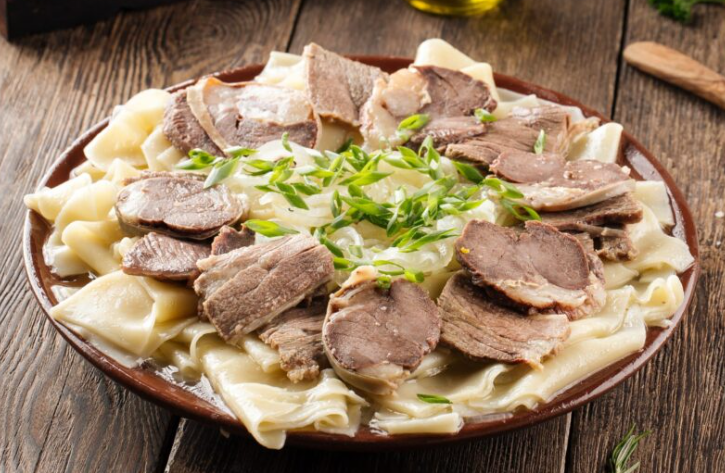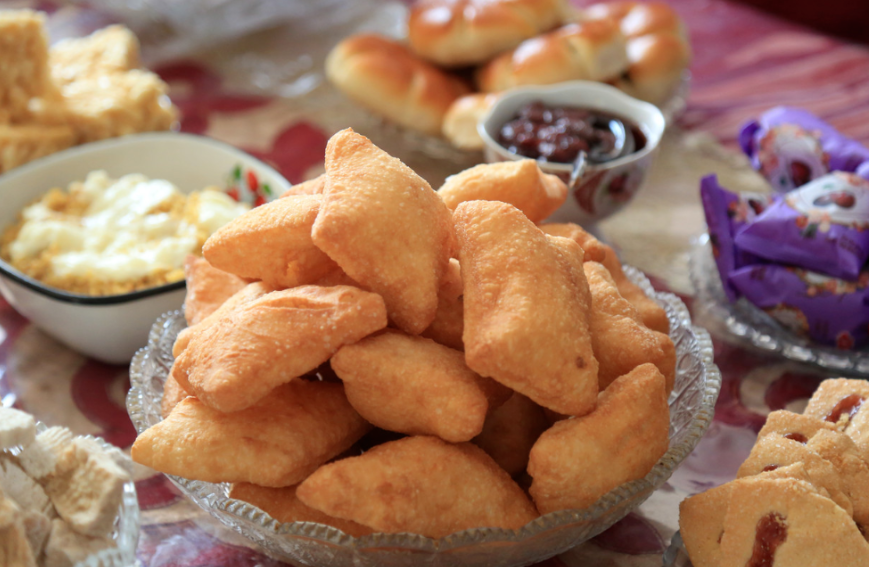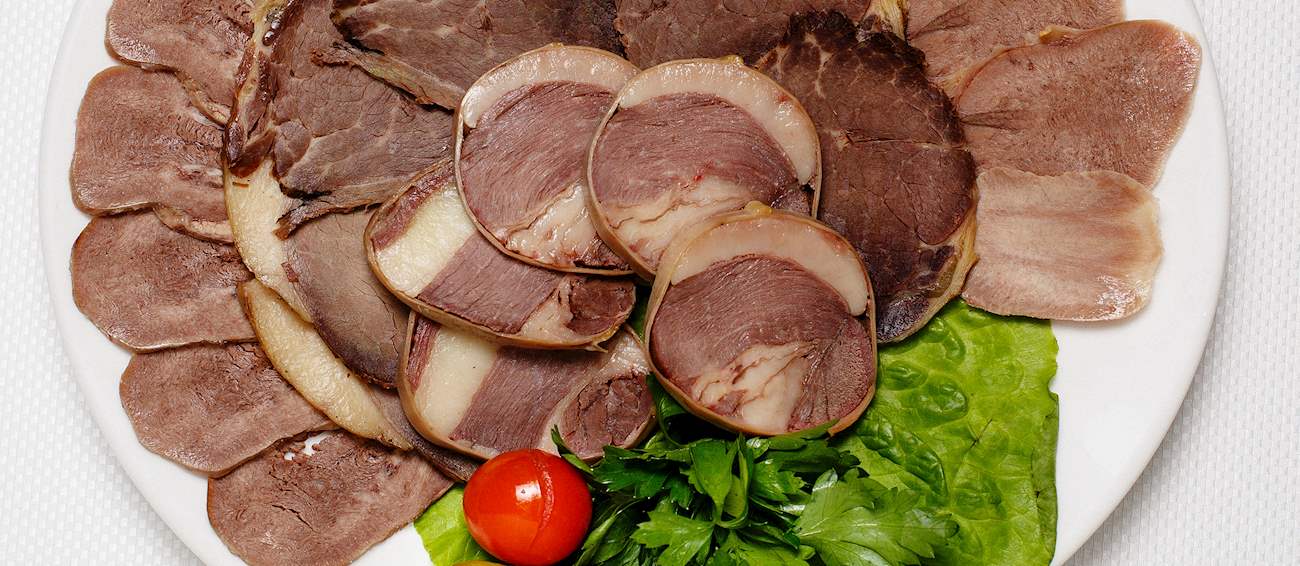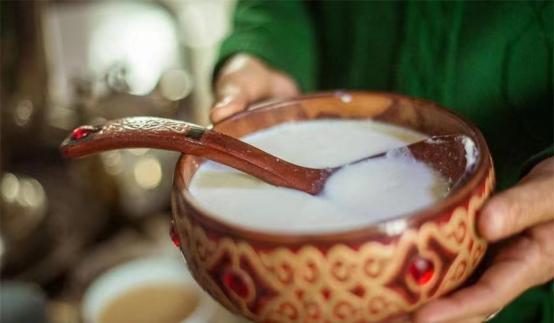Kazakhstan’s cuisine is a rich tapestry of flavors, deeply rooted in its nomadic heritage and influenced by the diverse cultures that have crossed its borders. Here are six must-try local foods that offer a glimpse into the heart of Kazakh culinary traditions:
1. Beshbarmak

Beshbarmak is the national dish of Kazakhstan, deeply rooted in the country’s nomadic heritage and celebrated for its cultural significance. The name translates to “five fingers,” reflecting the traditional practice of eating the dish with one’s hands. This hearty meal typically consists of boiled meat (horse, lamb, or beef) served over wide, handmade noodles and topped with a flavorful onion sauce. The meat is simmered for hours until tender, while the noodles absorb the rich broth, creating a perfect blend of flavors.
The preparation of Beshbarmak is a communal activity, often involving family members who gather to cook together, reinforcing the bonds of community and tradition. The dish is not just sustenance but a symbol of hospitality and respect, with the choicest cuts of meat reserved for honored guests. In Kazakh culture, Beshbarmak is a centerpiece of celebrations, from weddings to the Kazakh New Year, Nauryz. It represents unity, tradition, and the enduring legacy of the nomadic lifestyle.
Each region in Kazakhstan has its own variations of Beshbarmak, with some using camel meat or even fish in coastal areas. Despite these variations, the essence of the dish remains the same—a nourishing, communal meal that brings people together. Whether enjoyed in a traditional yurt or a modern restaurant, Beshbarmak is a culinary journey through Kazakhstan’s rich cultural heritage.
2. Kazy

Kazy, a traditional Kazakh sausage, is a beloved delicacy that reflects the rich culinary heritage of Kazakhstan. Made from horse meat, Kazy is not only a flavorful dish but also a symbol of the country’s nomadic roots.
The preparation of Kazy is a meticulous process that has been passed down through generations. The primary ingredient is horse meat, typically sourced from the ribs, which is known for its tenderness and flavor. The meat is seasoned with salt, pepper, and garlic, which not only enhances the taste but also acts as a natural preservative. The seasoned meat is then stuffed into cleaned horse intestines and either smoked or dried for several weeks to develop its unique, smoky flavor. This traditional method of preservation was essential for the nomadic tribes who needed a reliable food source during their long journeys.
Kazy is often served thinly sliced, accompanied by onions and sometimes vinegar, which complements its rich, savory taste. It is a staple during special occasions and celebrations, such as weddings and the Nauryz holiday, which marks the beginning of spring. The dish is not only a source of pride for Kazakhs but also a testament to their resourcefulness and adaptability in the harsh Central Asian climate.
For those interested in trying Kazy, it is best enjoyed in its authentic form in Kazakhstan. Restaurants in cities like Almaty offer traditional Kazakh dishes, including Kazy, providing a unique culinary experience. Whether you are a food enthusiast or a traveler seeking an authentic cultural experience, Kazy is a must-try dish that offers a taste of Kazakhstan’s rich history and traditions.
3. Baursak

Baursak, also known as Boortsog or Bawirsaq, is a traditional Kazakh fried bread that holds a special place in the country’s culinary heritage. These puffy, golden-brown dough pieces are often compared to doughnuts and are made from a simple mixture of flour, milk, yeast, sugar, eggs, butter, and salt. The dough is typically shaped into small balls, triangles, or other forms before being deep-fried until crispy on the outside and soft on the inside.
Baursak is more than just a snack; it is a symbol of hospitality and tradition in Kazakhstan. It is commonly served during special occasions such as weddings, memorials, and holidays like Nauryz, the Kazakh New Year. According to legend, the aroma of the frying dough rises into the sky, allowing departed loved ones to share in the celebration. This dish is often enjoyed with tea, and can be eaten plain or dipped in sugar, honey, or butter.
In different regions of Kazakhstan, Baursak can take on unique variations. For example, in some areas, the dough is enriched with white curd cheese, giving it a softer, more tender texture. There are also mini versions known as "shi-baursak," which are perfect for travelers due to their long shelf life. These small, crispy balls are sometimes pounded and used as an ingredient in other dishes, such as "zhent," a meal made with millet, butter, and sugar.
Baursak is not just a food; it is a cultural experience that brings people together. Whether enjoyed at a family gathering or as part of a festive celebration, Baursak offers a taste of Kazakhstan’s rich traditions and warm hospitality.
4. Zhaya

Zhaya is a traditional Kazakh dish that holds significant cultural importance in Kazakhstan. The name "Zhaya" is derived from the Kazakh word for "preserved meat," and it reflects the dish's origins in the nomadic lifestyle of the Kazakh people. Zhaya is typically made from horse meat, which is considered a delicacy in the region. The meat is carefully selected from the hind legs or ribs of the horse, known for its tenderness and rich flavor.
The preparation of Zhaya involves a meticulous process. The horse meat is first salted and marinated with traditional spices such as garlic, black pepper, and bay leaves. This not only enhances the flavor but also acts as a natural preservative, allowing the meat to be stored for extended periods without refrigeration. The marinated meat is then stuffed into cleaned intestines and either smoked or dried under controlled conditions.
Zhaya is often served cold, thinly sliced, and accompanied by onions, garlic, and sometimes a splash of vinegar. This combination creates a perfect balance of flavors, with the rich, smoky taste of the meat complemented by the sharpness of the onions and the tanginess of the vinegar. It is a staple during special occasions and celebrations, such as weddings and the Nauryz holiday, which marks the beginning of spring.
In addition to its culinary significance, Zhaya also holds symbolic value in Kazakh culture. It represents the resourcefulness and adaptability of the nomadic tribes who relied on preserved meats during their long journeys across the vast steppes of Central Asia. Today, Zhaya continues to be a cherished dish, reflecting the enduring traditions and heritage of the Kazakh people.
5. Kumys

Kumys, a traditional fermented mare’s milk beverage, is a cornerstone of Kazakh culture and a symbol of the nomadic heritage that has shaped the region’s history. This unique drink is not merely a beverage but a vital part of Kazakh identity, deeply embedded in their traditions and daily life.
The origins of Kumys can be traced back to the ancient nomadic tribes who roamed the vast steppes of Central Asia. These tribes relied on their horses for transportation, labor, and sustenance. The milk of mares was a precious resource, and the process of fermenting it into Kumys was developed as a means of preservation and to enhance its nutritional value. Over time, Kumys became an integral part of Kazakh hospitality, often served to guests as a gesture of welcome and respect.
The production of Kumys is a traditional art form that has been passed down through generations. The process begins with fresh mare’s milk, which is collected during the summer months when mares are lactating. The milk is then fermented in a special leather bag called a “chinach,” where it is regularly churned to ensure even fermentation. This process can take anywhere from a few hours to several days, depending on the desired strength and flavor profile. The result is a tangy, slightly alcoholic beverage with a consistency similar to buttermilk.
Kumys is renowned for its health benefits. It is rich in vitamins, minerals, and probiotics, which aid digestion and boost the immune system. Historically, it has been used to treat various ailments, including tuberculosis and anemia. Modern science has also recognized its potential to improve overall well-being, making it a popular choice for health-conscious consumers.
In Kazakhstan, Kumys is more than just a drink; it is a cultural experience. It is often consumed during traditional festivals and ceremonies, such as the Nauryz holiday, which marks the beginning of spring. The communal sharing of Kumys strengthens social bonds and reinforces the sense of community. Whether enjoyed in a traditional yurt or a modern setting, Kumys remains a cherished part of Kazakh culture, connecting the present with the rich traditions of the past.




































